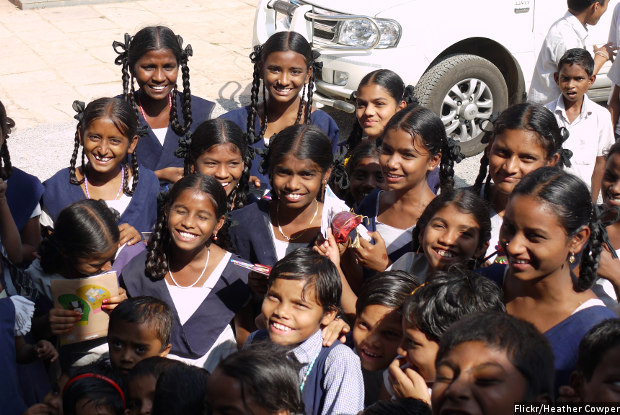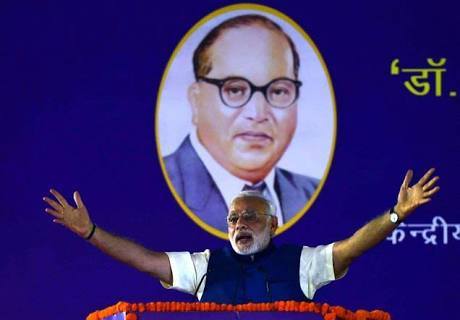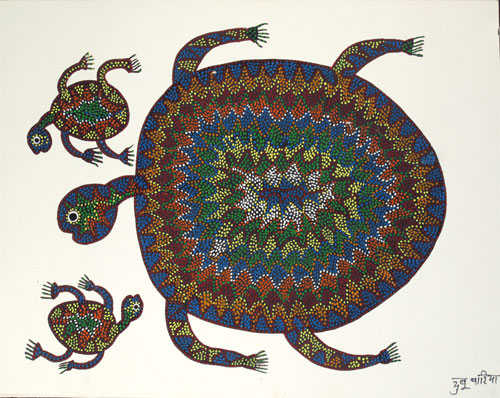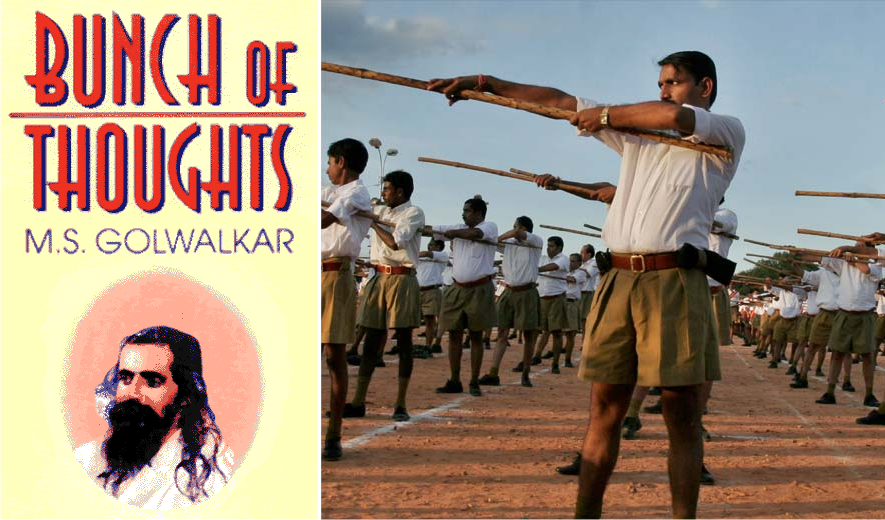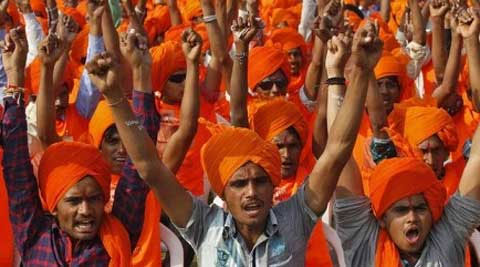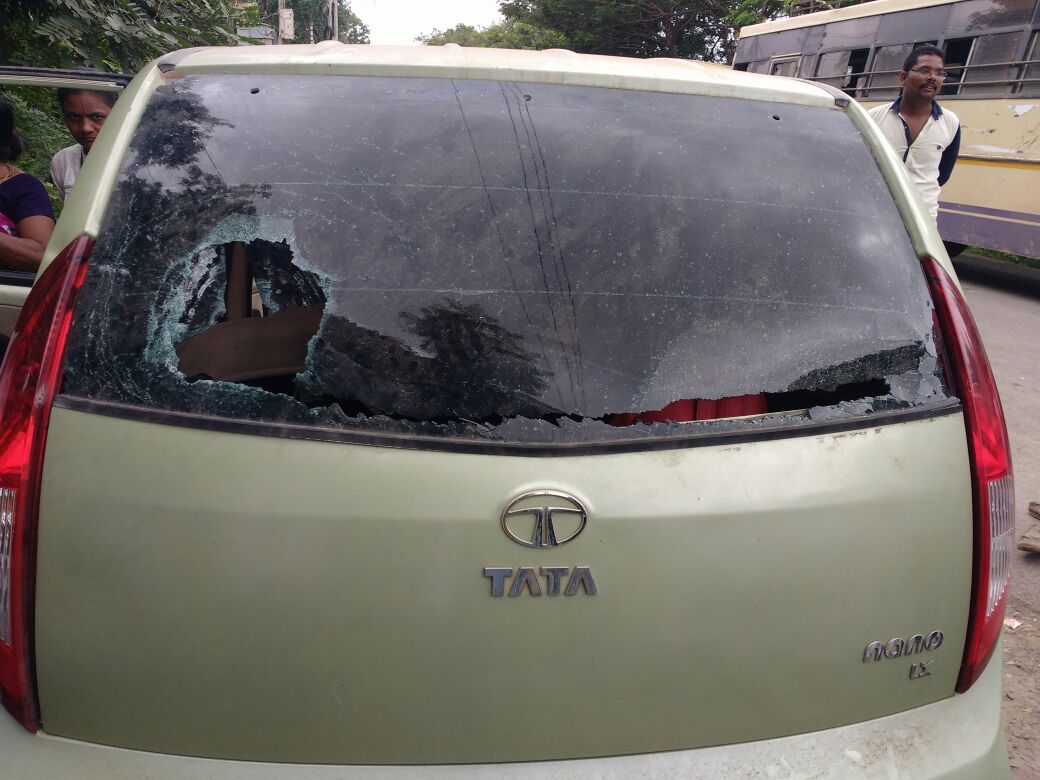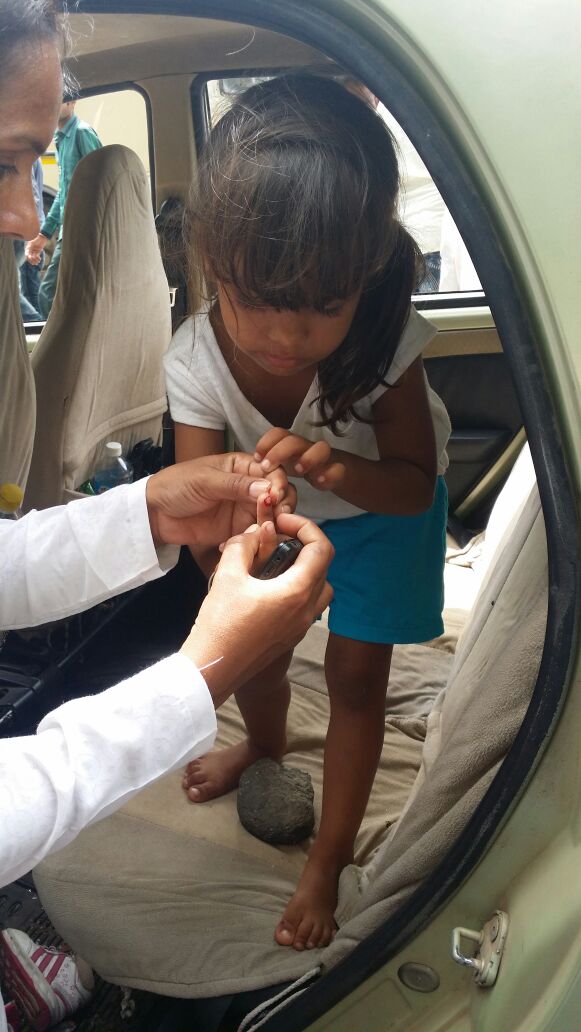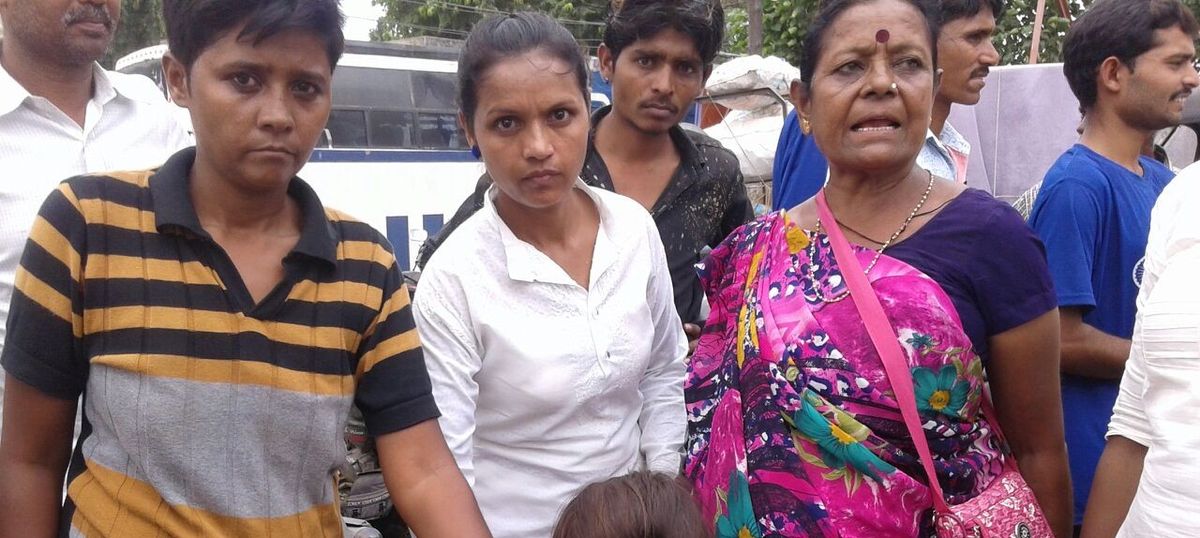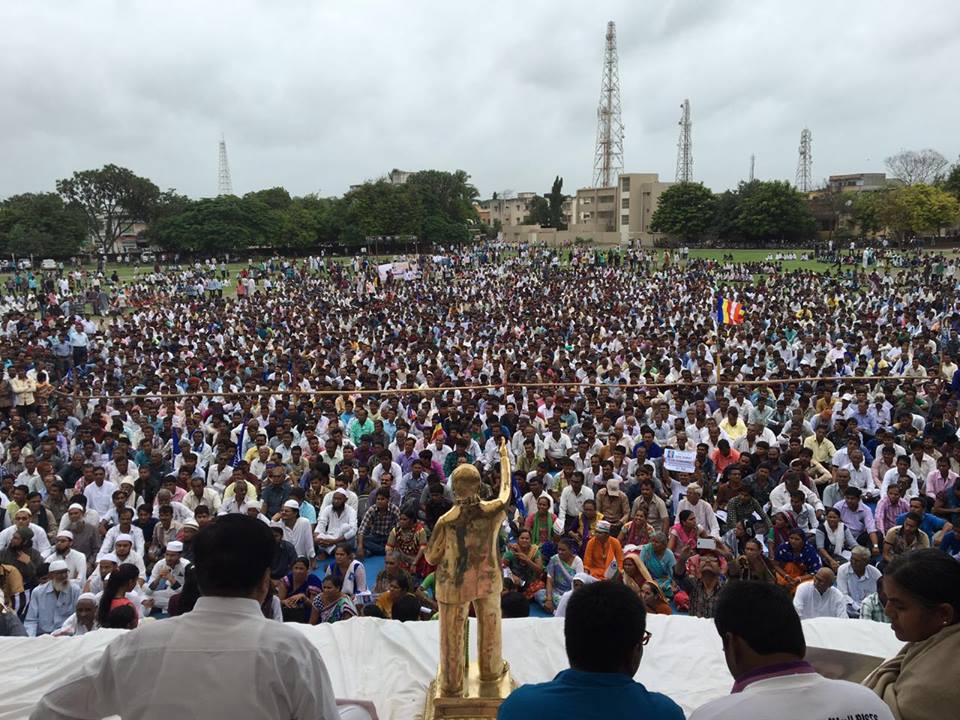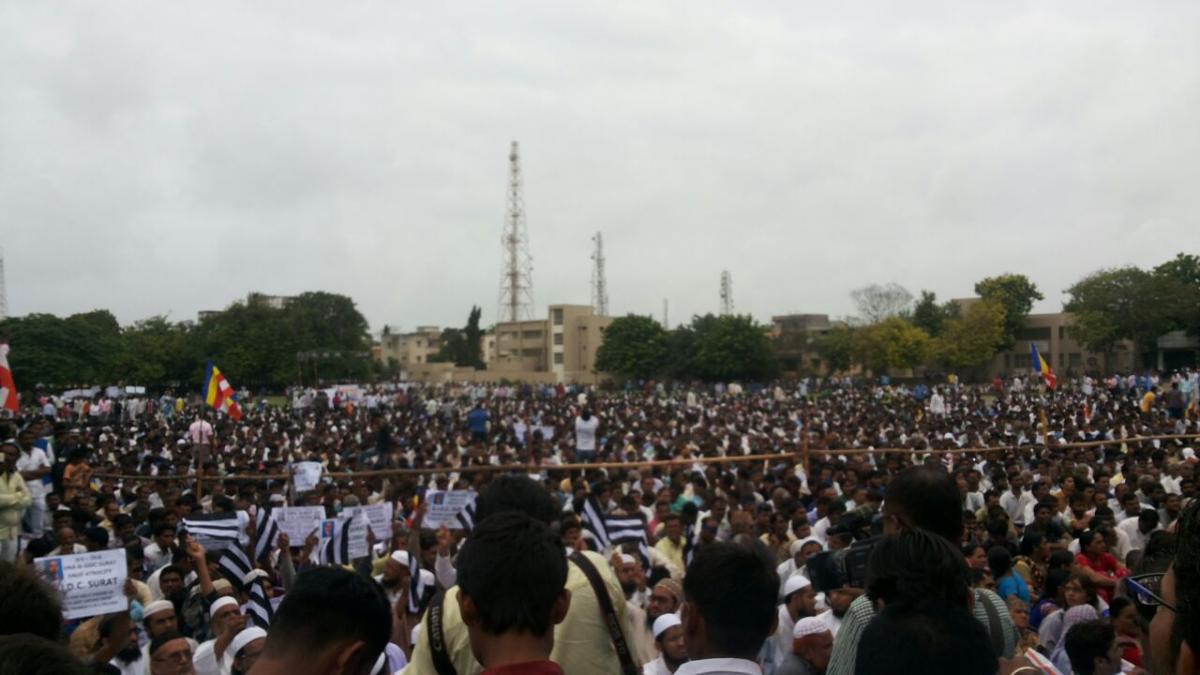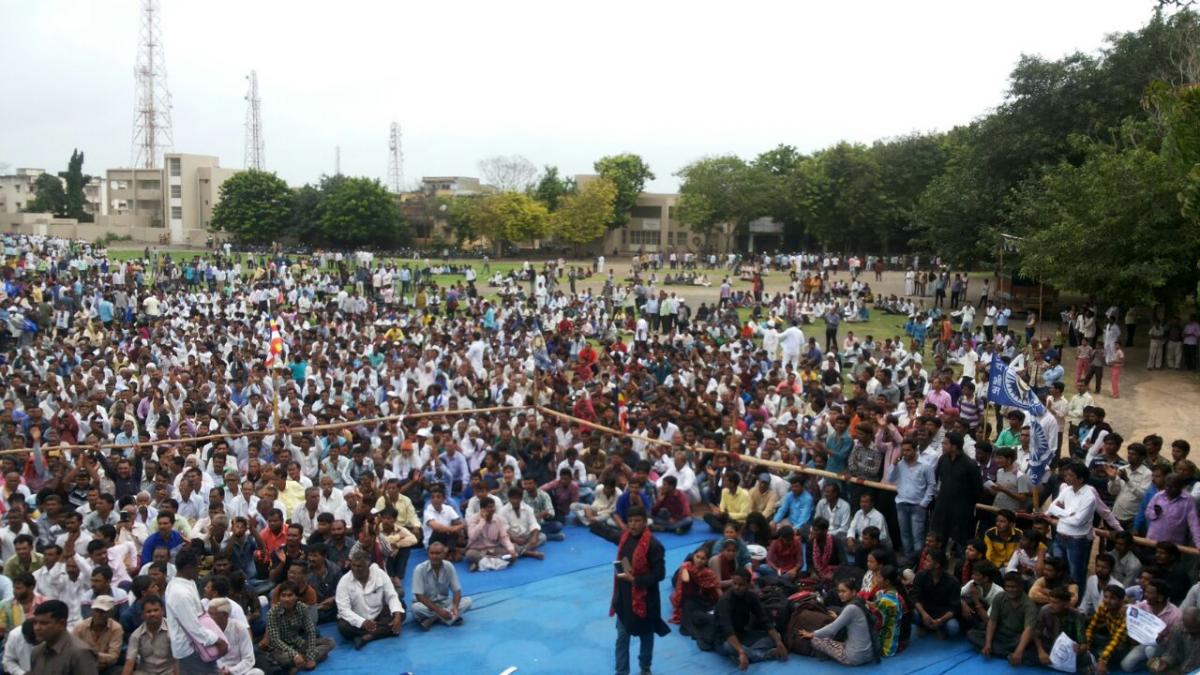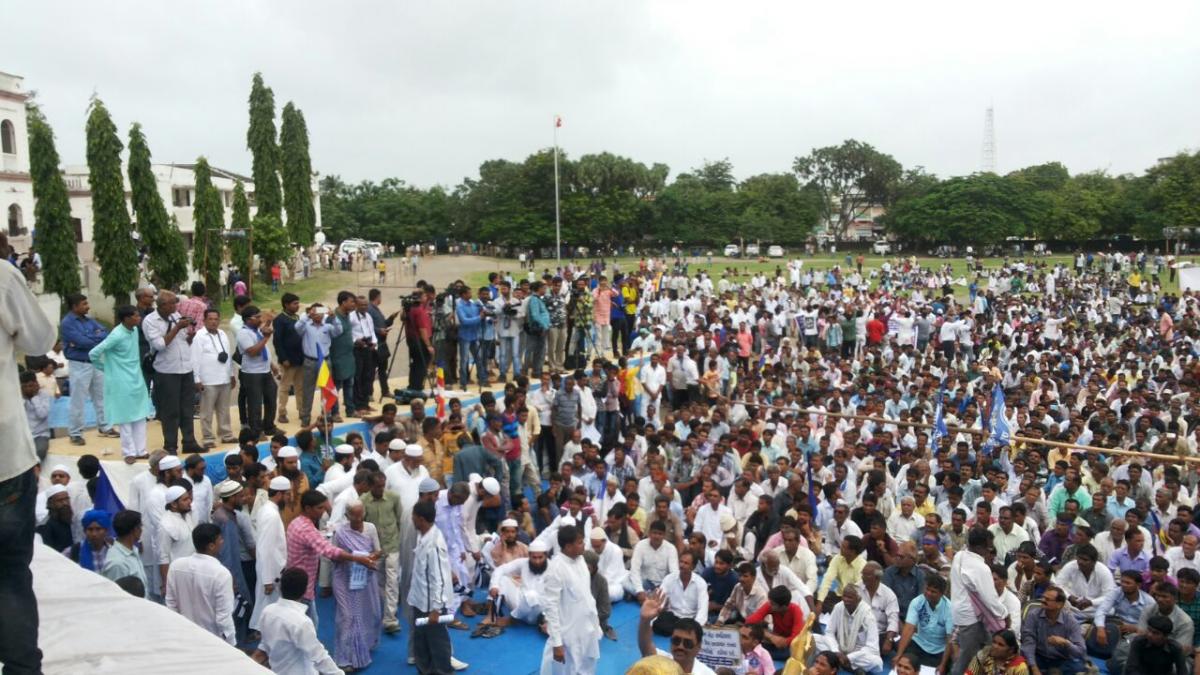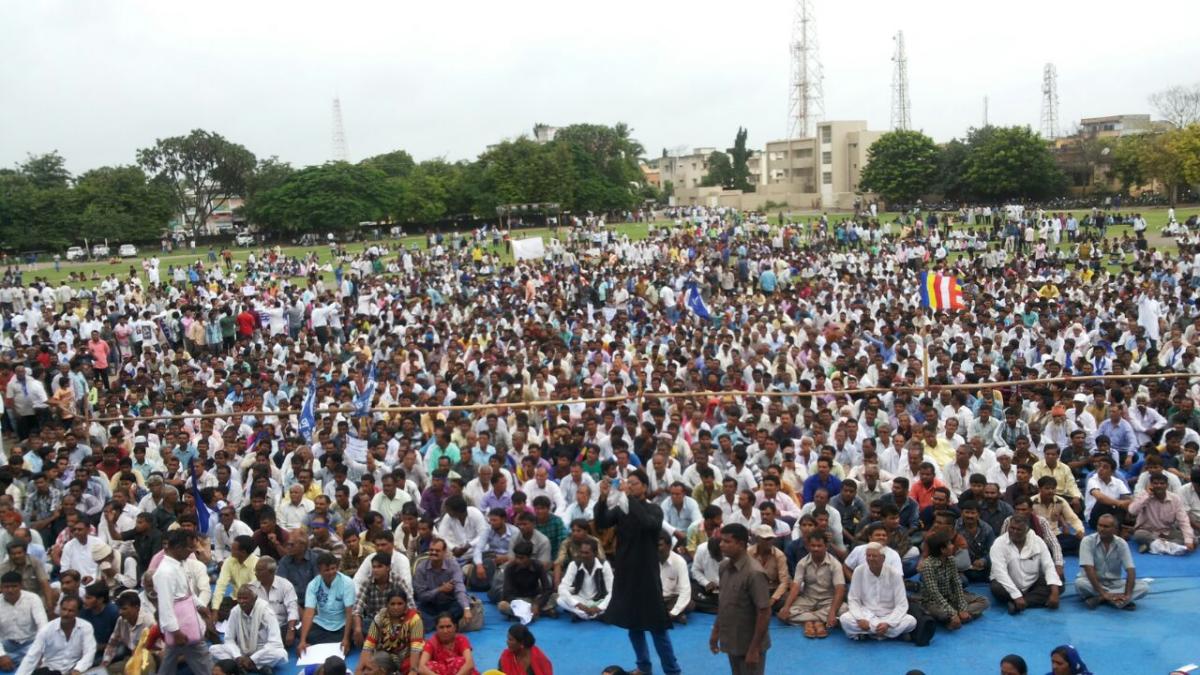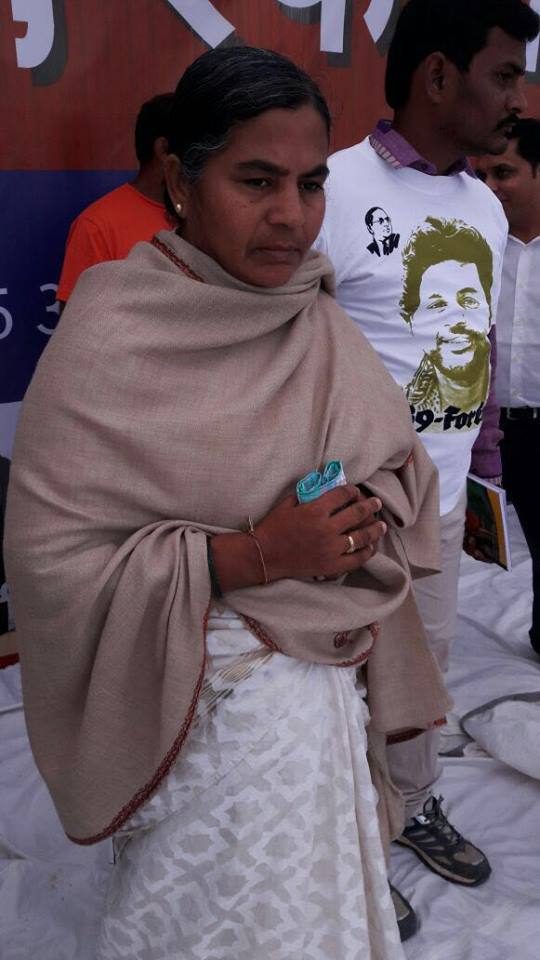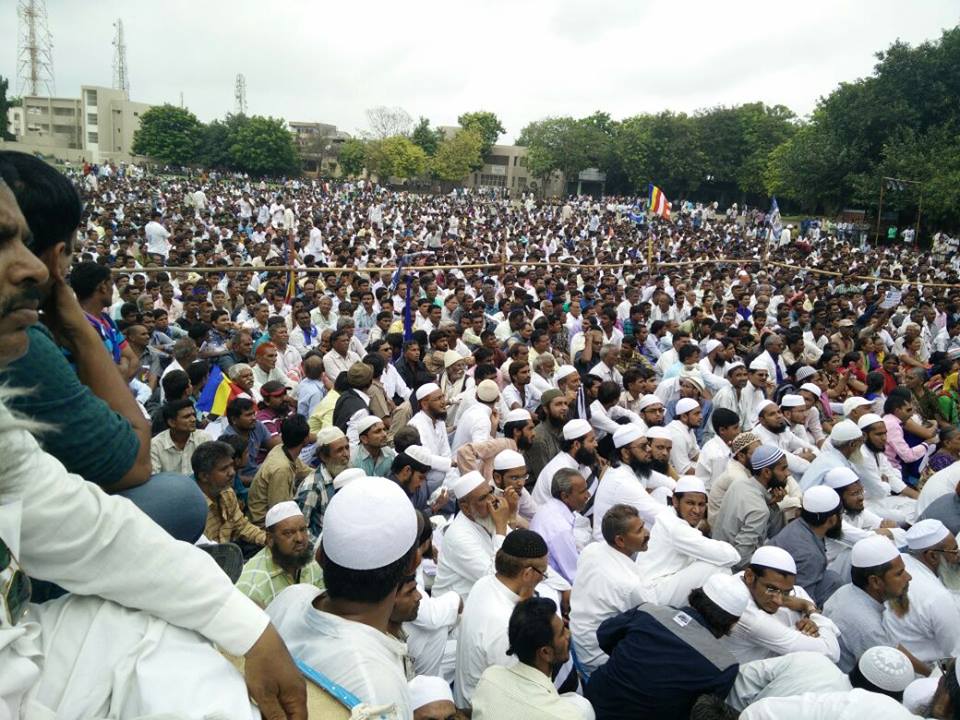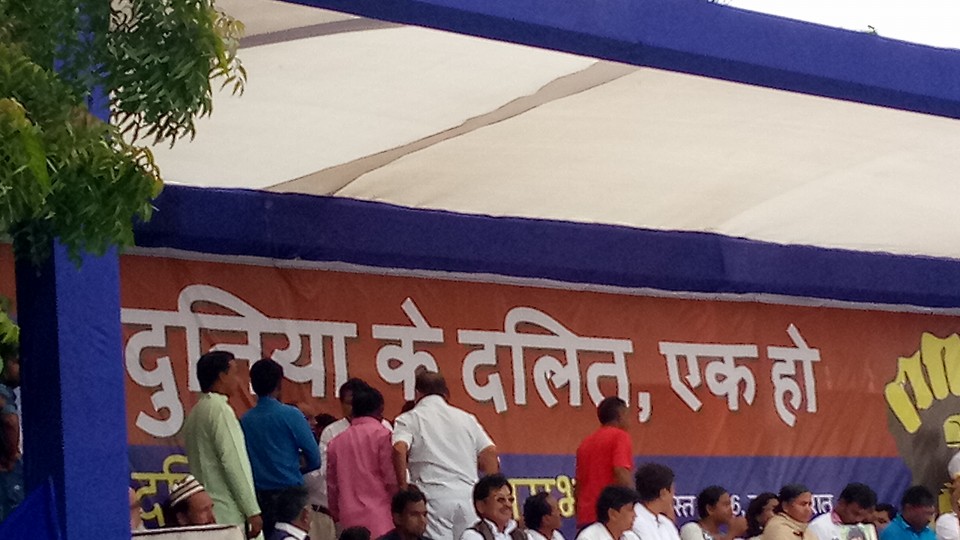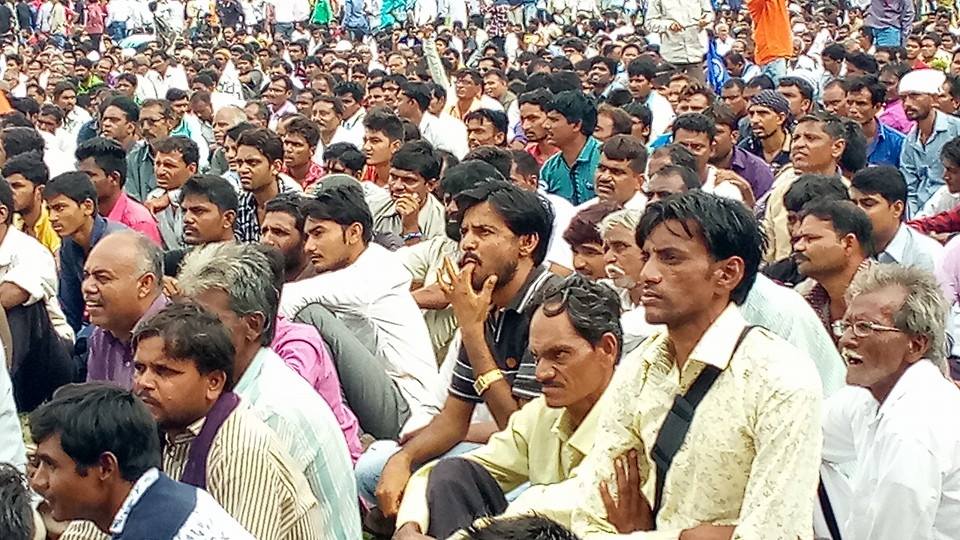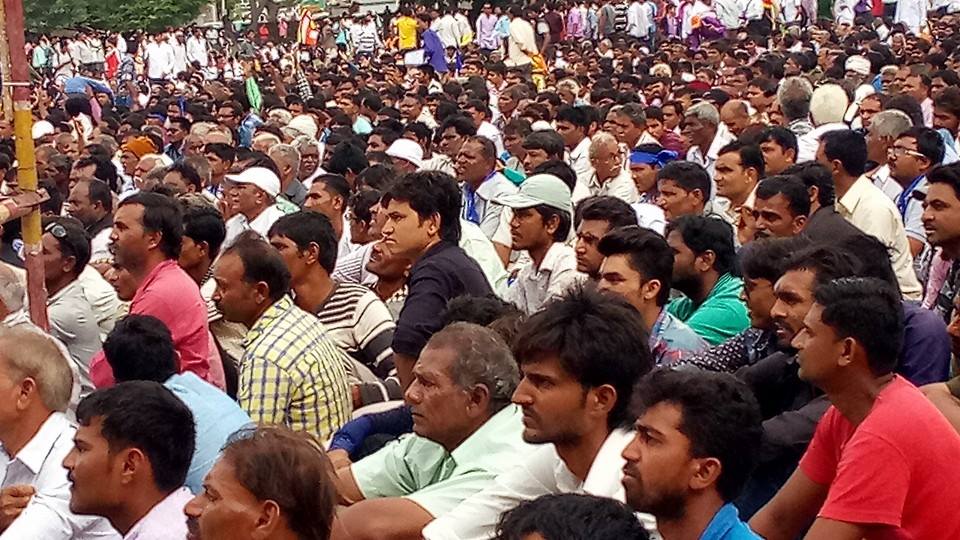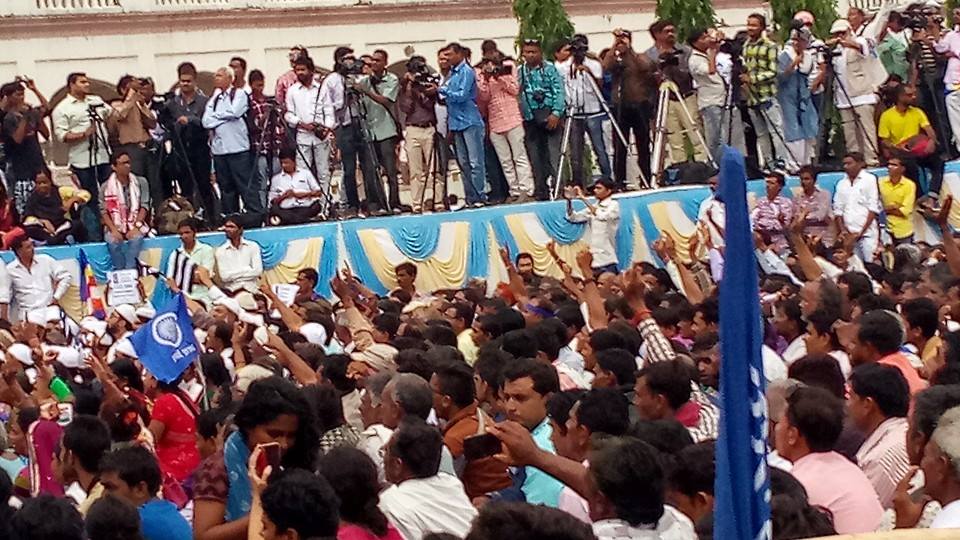
जाति और दलितों पर संघ परिवार और उसके समर्थकों के नजरिये को समझने कि लिए इस हिंदूवादी कट्टरपंथी संगठन के शीर्ष पुरुष गुरु गोलवलकर के बंच ऑफ थॉट्स (हिंदी में विचार गुच्छ) को पढ़ना बेहद जरूरी है।
बीजेपी और संघ को राह दिखाने वाली विचारधारा की इतिहास में पड़ताल की जाए तो इस पर ब्राह्मणवादी वर्चस्व का असर साफ दिख जाएगा।
प्रधानमंत्री नरेंद्र मोदी ने अपने रेडियो कार्यक्रम मन की बात में जैसे ही उना की घटना की निंदा की वैसे ही राष्ट्रीय स्वयंसेवक संघ ने भी दलितों की बर्बर पिटाई की इस घटना की आलोचना कर डाली। लगभग एक ही वक्त इस घटना की निंदा किए जाने से उनके नजरिये का खोखलापन खुल कर सामने आ गया है।
गुजरात में दलितों पर हमला 11 जुलाई को हुआ था और प्रधानमंत्री ने 6 अगस्त को इस पर अपना मुंह खोला। संघ और प्रधानमंत्री दोनों की ओर से लगभग एक महीने बाद इस पर बयान जारी किया।
दलितों पर हमले को लेकर संघ की यह कथित गंभीरता कितनी खरी है यह इसी बात से उजागर हो जाती है कि अपने बयान के साथ उसने यह भी जोड़ा कि प्रधानमंत्री को 80 फीसदी गोरक्षकों को फर्जी नहीं कहना चाहिए था। इस बात पर भी गौर करना चाहिए कि आरएसएस के सहयोगी संगठन विश्व हिंदू परिषद ने इस मामले पर चुप रहना ही ठीक समझा, वहीं दूसरे सहयोगी संगठन बजरंग दल ने ट्वीट किया- गर्व से कहो हम गोरक्षक हैं। उनके जाने-माने नारे गर्व से कहो हम हिंदू हैं की पैरोडी।
गर्व से कहो हम हिंदू है का नारा 1990 के दशक में बाबरी मस्जिद को गिराने के लिए हथियारबंद होने की अपील थी।
बहरहाल, यह सवाल पूछना लाजिम है कि क्या संघ और बीजेपी सचमुच दलितों पर हो रहे अत्याचारों पर गंभीर हैं। इसका जवाब जानने के लिए अगर हम इतिहास में थोड़ा पीछे जाकर संघ और बीजेपी की मार्गदर्शक विचारधारा की पड़ताल करें तो पाएंगे तो इन पर ब्राह्मणवादी विचारधारा का कितना वर्चस्व है। यह सवाल पूछा जाना चाहिए कि संघ का नेतृत्व सिर्फ ऊंची जातियों के हाथों में क्यों रहा है।
मौजूदा संघ प्रमुख मोहन भागवत के साथ-साथ संघ के सभी सर्वोच्च नेता ब्राह्मण क्यों रहे हैं। हां, इनमें राजेंद्र सिंह जरूर शामिल थे। लेकिन वे भी ऊंची जाति के यानी ठाकुर थे। संघ ने हमेशा वर्णाश्रम व्यवस्था में विश्वास किया है, जो हिंदू जाति को चार वर्गों में बांटने में विश्वास करती है।
संघ के दूसरे प्रमुख रहे गोलवलकर ने वर्णाश्रम व्यवस्था का जोरदार ढंग से समर्थन किया था। उन्होंने विभिन्न जातियों की ओर अपनाए गए पेशों को निःस्वार्थ सेवा कहा था। जाति भेद को उन्होंने ब्रिटिश शासन का नतीजा माना था- बंच ऑफ थॉट्स में वह लिखते हैं-
समाज में यह जो ऊंच और नीच जैसी असमानता का भाव वर्णाश्रम व्यवस्था में घर कर गया है, वह हाल बात है। अंग्रेजों ने इसमें और जहर घोला है। बांटो और राज करो की अपनी नीति के तहत अंग्रेजों ने इस जाति भेद को बढ़ावा दिया है। लेकिन वर्णाश्रम व्यवस्था में मूल रूप से कोई भेदभाव नहीं है। वास्तव में गीता में तो यह कहा गया है कि जो व्यक्ति अपना निर्धारित काम (जो उसे सुपुर्द किया गया है) निस्वार्थ भावना से करता है, वह ऐसा करके ईश्वर की पूजा करता है ( बंच ऑफ थॉट्स – वन्स द ग्लोरी – पेज-98)।
कथित निचली जातियों पर अत्याचारों पर बोलने के बावजूद आरएसएस इस किताब की हजारों प्रतियां छापता है और इसकी एक-एक लाइन का पालन करता है।
संघ परिवार का यह दोमुंहापन इसी से जाहिर हो जाता है कि एक तरफ तो यह मनुस्मृति को अपना सबसे पवित्र धर्मग्रंथ मानता है तो दूसरी ओर जाति भेद मिटाने की बात करता है।
मनुस्मृति के प्रति उसके प्रेम को अगर देखना हो तो उस दौर में जाना होगा, जब संविधान को अंतिम रूप दिया जा रहा था।
यहां इन पंक्तियों पर गौर करें- आज भी उनके कानून (मनुस्मृति में वर्णित) को दुनिया भर में सम्मान की निगाह से देखा जाता है। कई जगह उनके कानून का अनुपालन होता है लेकिन संविधान के हमारे पंडितों के लिए ये कुछ भी नहीं हैं। (एपांयर एंड नियोलिबरलिज्म इन एशिया, पेज 252 पर ऑर्गेनाइजर के हवाले से दिया गया उद्धरण)।
इस संदर्भ में मनुस्मृति का जिक्र जरूरी है क्योंकि यही वह ग्रंथ है, जिसने अन्यायपूर्ण जाति व्यवस्था की नींव रखी है। इसी ग्रंथ ने हरेक जाति के लिए काम निर्धारित किए हैं- ब्राह्मणों के लिए मनु ने पढ़ाने और वेद पढ़ने का काम निर्धारित किया। अपने लिए और दूसरों के लिए बलि देने और दान लेने-देने का काम सौंपा। क्षत्रियों को मनु ने लोगों की रक्षा करने, दान देने, वेद पढ़ने, बलि देने और सांसारिक आनंद से दूर रहने को कहा है। वैश्यों को पशुपालन, दान देने, वेद पढ़ने, व्यापार करने और पैसों का लेनदेन और खेती करने को कहा गया। शूद्रों को सिर्फ एक काम दिया और वह यह कि वह चुपचाप बगैर कष्ट जाहिर किए इन तीनों वर्णों के लोगों की सेवा करे। ( द लॉज ऑफ मनु, अनु. -जी.व्हलर पृष्ठ संख्या -3)।
आरएसएस के गुरुजी (गोलवलकर) ने अपने ग्रंथों में मनु को बड़े ही श्रद्धा भाव से भगवान कहा है और उसे महान कानून निर्माता कहा है। उन्होंने मनु को सबसे बड़ा विधि निर्माता कहा और ब्राह्मणों का वर्चस्व स्थापित करने के लिए कई जगहों पर उसका जिक्र किया है-
यह वास्तविकता है कि मनु ने अपने कानूनो को तैयार करने के समय सभी लोगों का आह्वान किया और कहा कि वे आएं और इस संसार में सबसे पहले ब्राह्मणों के चरणों में बैठ कर अपने कर्तव्यों की जानकारी ली। (वी अवर नेशनहुड डिफाइंड, पेज 117) ।
मनुस्मृति ही वह ग्रंथ है, जिसने निचली जातियों के लिए शारीरिक दंड निर्धारित किए हैं। वीएचपी की ओर से समर्थित गोरक्षक दल इसी ब्राह्मणवादी व्यवस्था को लागू करना चाहते हैं। उना, लातेहार, दादरी और हाल में आंध्रप्रदेश की घटनाएं इसका उदाहरण हैं।
मनुस्मृति में कहा गया है-
ब्राह्मण की गाय चुराने, बांझ गाय के नथुनों में नकेल डालने और ब्राह्मणों की मवेशियों को चुराने वालों का पैर घुटने से काट दिया जाए। ( द लॉज ऑफ मनु, अनु. -जी.व्हलर पृष्ठ संख्या -53)
संघ परिवार दलितों पर होने वाले अत्याचारों में हमेशा विदेशी हाथ देखता आया है। आजादी के बाद ज्यादातर अत्याचार की इन घटनाओं को इसने मीडिया की करतूत करार दिया है। प्लेइंग द ओल्ड गेम शीर्षक से लिखे अपने अध्याय में गोलवलकर कहते हैं-
अपने कड़वे अनुभव से हमें यह अहसास है कि अंग्रेजों ने किस तरह एक जाति को दूसरी जाति और एक पंथ को दूसरे पंथ के साथ लड़ाया। उदाहरण के लिए उन्होंने ब्राह्मणों और गैर ब्राह्मणों में लड़ाई करवाई और फूट डालो और राज करो की नीति सफलतापूर्वक लागू की। जबकि हमारे लोग यहां तक तक कि तथाकथित नेता तक इसका शिकार बनते गए। हमें अंग्रेजों की इस साजिश से सबक सीखना चाहिए और अपनी धरती पर विदेशी ताकत या उनके एजेंटों की ऐसी किसी भी साजिश से सावधान रहना चाहिए ( बंच ऑफ थॉट्स) ।
अगर हम दलितों के खिलाफ हिंसा की इन घटनाओं को छोड़ दें तो भी संघ परिवार ने हमेशा से हिंसा के अपने सिद्धांत पर विश्वास किया है। मनुस्मृति में साफ कहा गया है कि राष्ट्र की श्रेष्ठता प्रमाणित करने के लिए हिंसा ही एक मात्र औजार है। संघ ने अपनी इस समझ को बार-बार देश के अंदर लागू किया है। जब भी इस्लामी आतंकवाद पर कोई चर्चा होती है तो इस दक्षिपंथी संगठन को इसे खत्म करने के लिए हिंसा ही एक मात्र रास्ता नजर आता है। कर्नल पुरोहित, असीमानंद और साध्वी प्रज्ञा जैसे कई संघ कार्यकर्ता आतंकी वारदातों को अंजाम देने के आरोपी रहे हैं। हां, यह अलग बात है कि संघ इन वारदातों में इनके शामिल होने के आरोपों को सिरे से नकारता रहा है। लेकिन हिंसा एक आदर्श के तौर पर संघ की विचारधारा में गहरे समाया हुआ है।
गोलवलकर ने बंच ऑफ थॉट्स में कथित तौर पर शांति स्थापना के लिए हिंसा अपनाने पर भी चर्चा की है। इसमें कहा गया है-
हमारा अतीत शौर्य और नायकत्व के मानक स्थापित करने का रहा है। हमारे देश में एक से एक सेनापति और विजेता हुए हैं, जिन्हें पूरी दुनिया जानती है। इन सेनापतियों और विजेताओं ने धर्म की स्थापना के लिए एक से एक भयंकर युद्ध लड़े।
संविधान से आरएसएस की असहमति जगजाहिर है। देश में आरक्षण की नीति की समीक्षा की मांग में इसकी छाप देखी जा सकती है। आरएसएस और बीजेपी दोनों ने ओबीसी को प्रतिनिधित्व देने के लिए की गई मंडल आयोग की सिफारिशों का विरोध किया था।
लिहाजा अब यह सवाल उठता है कि अचानक आरएसएस या बीजेपी में यह दलित प्रेम कहां से उमड़ आया। इसका एक मात्र जवाब है- उत्तर प्रदेश में होने वाले विधानसभा चुनाव। अगर भाजपा यूपी में चुनाव हारती है तो यह राज्य सभा में बहुमत हासिल नहीं कर पाएगी। ऐसा हुआ तो मोदी के अच्छे दिनों के नारे का गुब्बारा फट जाएगा।
यूपी में दलितों की आबादी 20.5 फीसदी है। यह आबादी पारंपरिक तौर पर बहुजन समाज पार्टी को वोट देती है। 2014 के लोकसभा चुनाव में 66 आरक्षित सीटों में से बीजेपी ने 40 सीटें जीती थी। उत्तर प्रदेश की सभी 17 आरक्षित सीटों पर बीजेपी ने जीत हासिल की थी।
केंद्र में मोदी सरकार के आने के बाद दलितों के खिलाफ अत्याचार के मामले बढ़े हैं लेकिन सरकार की ओर से इसे रोकने की पहल ढुलमुल ही रही है। लिहाजा दलितों के बीच मोदी और उनकी सरकार की छवि धक्का लगा है।
हैदराबाद में रोहित वेमुला की आत्महत्या, ऊना कांड और मायावती पर व्यक्तिगत हमला और संघ की ओर से आरक्षण की समीक्षा की मांग ने यूपी में बीजेपी की स्थिति कमजोर कर दी है। बीजेपी और संघ, दोनों अब दलितों का गुस्सा शांत करने की जीतोड़ कोशिश में लगे हैं। लेकिन इस तथ्य को भूलना नहीं चाहिए कि संघ और बीजेपी की विचारधारा में दलित विरोध गहरे समाया हुआ है।
साभार – न्यूजक्लिक
(इस लेख में हल्का संपादन किया गया है ताकि संक्षिप्त शब्दों को पूरा लिखा जा सके या इसका मतलब समझाया जा सके )
